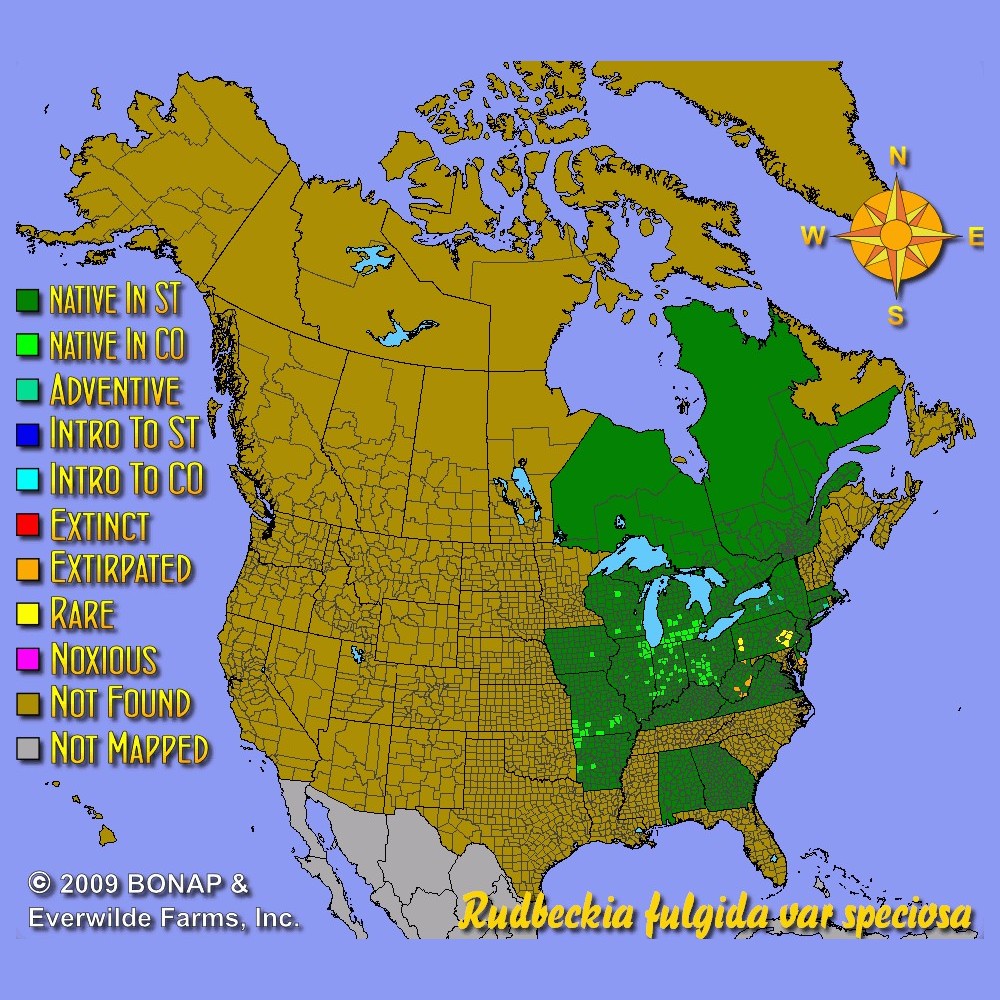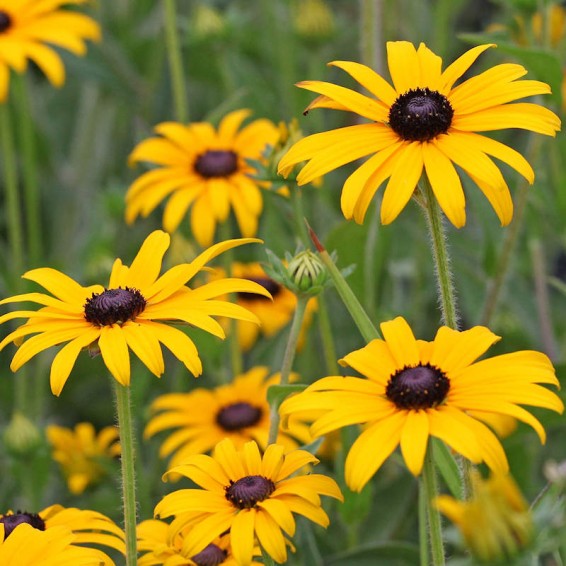Showy Black Eyed Susan Seeds
Rudbeckia fulgida speciosa
- HOW TO GROW
- FAST FACTS
HOW TO GROW
Sowing: Direct sow in late fall, pressing into the surface of the soil since this plant needs light to germinate. For spring planting, mix the seeds with moist sand and store in the refrigerator for 30 days before planting. Keep the soil lightly moist until germination, which usually takes 2-3 weeks. The seeds can also be started indoors 6-8 weeks before planting in spring. Keep seedlings lightly moist, and transplant them as soon as they have developed several leaves.
Growing: Water seedlings regularly until they become established. This plant grows very quickly and needs little care, and grows best in fairly dry soil. Mature plants tolerate heat and drought well, as well as tolerating clay or rocky soils. Deadhead for the longest blooming period. Mature plants can be divided. This plant attracts butterflies, and may self-seed.
Harvesting: For cut flowers, choose stems with flowers that have just opened. Strip the foliage that will fall below the water level, and place in water immediately.
Seed Saving: After the flower petals fall from the head, the center cone will begin to develop seed. Remove the seed heads as soon as the stem beneath the cone begins to turn dry and brown. Spread the seed heads out to dry away from direct sunlight, then separate the small seeds from the stems by rubbing them lightly. Store the cleaned seed in a dry, cool place.
FAST FACTS
Common Names: Gloriosa Daisy, Eastern Coneflower, Orange Coneflower
Latin Name: Rudbeckia fulgida speciosa
Species Origin: US Native Wildflower
Type: Native Wildflowers
Life Cycle: Perennial
USDA Zones: 4, 5, 6, 7
US Regions: Midwest, Northern, Northeast
Seeds per Ounce: 27,000
Stratification: Cold/Wet for 8 Weeks
Germination Ease: Stratify 8 Weeks
Sunlight: Full Sun
Height: 30 Inches
Color: Yellow
Bloom Season: Blooms Late Summer, Blooms Early Fall
Uses: Attracts Pollinators, Attracts Honeybees, Attracts Butterflies, Hummingbirds, Cut Flowers, Deer Resistant
DESCRIPTION

HOW TO GROW
Sowing: Direct sow in late fall, pressing into the surface of the soil since this plant needs light to germinate. For spring planting, mix the seeds with moist sand and store in the refrigerator for 30 days before planting. Keep the soil lightly moist until germination, which usually takes 2-3 weeks. The seeds can also be started indoors 6-8 weeks before planting in spring. Keep seedlings lightly moist, and transplant them as soon as they have developed several leaves.
Growing: Water seedlings regularly until they become established. This plant grows very quickly and needs little care, and grows best in fairly dry soil. Mature plants tolerate heat and drought well, as well as tolerating clay or rocky soils. Deadhead for the longest blooming period. Mature plants can be divided. This plant attracts butterflies, and may self-seed.
Harvesting: For cut flowers, choose stems with flowers that have just opened. Strip the foliage that will fall below the water level, and place in water immediately.
Seed Saving: After the flower petals fall from the head, the center cone will begin to develop seed. Remove the seed heads as soon as the stem beneath the cone begins to turn dry and brown. Spread the seed heads out to dry away from direct sunlight, then separate the small seeds from the stems by rubbing them lightly. Store the cleaned seed in a dry, cool place.
FAST FACTS
Common Names: Gloriosa Daisy, Eastern Coneflower, Orange Coneflower
Latin Name: Rudbeckia fulgida speciosa
Species Origin: US Native Wildflower
Type: Native Wildflowers
Life Cycle: Perennial
USDA Zones: 4, 5, 6, 7
US Regions: Midwest, Northern, Northeast
Seeds per Ounce: 27,000
Stratification: Cold/Wet for 8 Weeks
Germination Ease: Stratify 8 Weeks
Sunlight: Full Sun
Height: 30 Inches
Color: Yellow
Bloom Season: Blooms Late Summer, Blooms Early Fall
Uses: Attracts Pollinators, Attracts Honeybees, Attracts Butterflies, Hummingbirds, Cut Flowers, Deer Resistant





